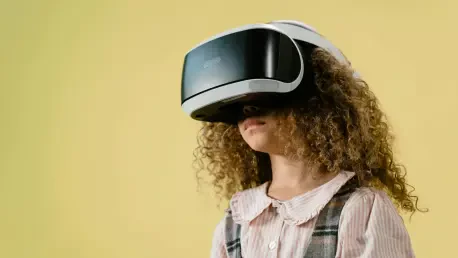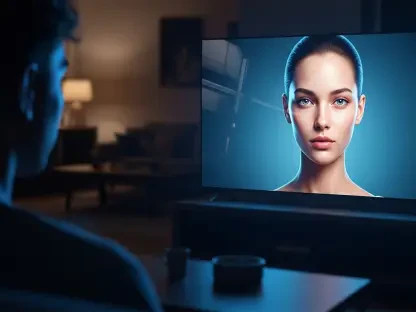The wearable technology landscape stands on the cusp of a groundbreaking evolution, with Android XR smart glasses poised to redefine human interaction with digital environments by 2026. Anchored by a powerful alliance among Google, Samsung, and Qualcomm, Android XR is rapidly establishing itself as the foundation for a new era of extended reality (XR) devices that seamlessly integrate augmented reality (AR), artificial intelligence (AI), and innovative design. Building on the critical acclaim of the Samsung Galaxy XR launched in October, excitement is mounting for an array of forthcoming smart glasses from a wide spectrum of contributors, including tech powerhouses, fashion trailblazers, and agile startups. This momentum signals a shift where XR wearables are expected to transcend their current niche status, becoming indispensable tools in both personal and professional spheres. By blending cutting-edge functionality with aesthetic appeal, these devices are set to reshape daily life in ways previously unimaginable, marking 2026 as a pivotal year for the industry.
The Technology Behind Android XR Smart Glasses
AI and Visual Intelligence
The integration of AI into Android XR smart glasses represents a significant leap forward in how users engage with technology, particularly through Google’s Gemini AI platform. Unlike existing competitors that rely heavily on audio interactions, such as Meta’s Ray-Ban Smart Glasses, Gemini AI empowers these new devices to process visual inputs and screen information with remarkable precision. This capability is expected to debut prominently in Samsung’s upcoming smart glasses, offering users an intuitive experience where the device understands and reacts to what they see. Such advancements could transform routine tasks—think real-time navigation or instant object recognition—into seamless, hands-free operations. The potential for Gemini AI to set a new standard in user interaction positions Android XR as a frontrunner in the wearable tech race, promising a future where visual intelligence becomes an everyday norm by 2026.
Beyond the immediate user benefits, the incorporation of AI like Gemini into Android XR smart glasses hints at broader implications for app development and ecosystem growth. Developers are likely to leverage this technology to create applications that harness visual data, crafting experiences tailored to individual environments and needs. Imagine software that not only overlays digital information onto the physical world but also adapts dynamically based on real-time visual cues. Samsung’s anticipated releases are rumored to pioneer this integration, potentially inspiring other brands within the Android XR ecosystem to follow suit. This trend underscores a shift toward more immersive and context-aware interactions, setting the stage for 2026 to be a year where smart glasses evolve from mere gadgets to essential companions in navigating an increasingly digital world.
Advanced Hardware Innovations
At the heart of Android XR smart glasses lies a commitment to cutting-edge hardware, with innovations like microLED displays and waveguide optics driving performance to new heights. Companies such as Samsung and Magic Leap are focusing on power-efficient designs that enable all-day AR usability without sacrificing quality. MicroLED technology, for instance, offers brighter, more vivid visuals while consuming less energy, a critical factor for wearables intended for prolonged use. Magic Leap’s reference model, developed in collaboration with Google’s Raxium technology, exemplifies this push for efficiency, aiming to deliver enterprise-grade AR experiences that can withstand the demands of industrial applications. These advancements signal a departure from bulky, power-hungry devices, paving the way for sleeker, more practical smart glasses by 2026.
Equally important is the role of waveguide optics in enhancing the visual fidelity of Android XR smart glasses, ensuring that AR overlays appear sharp and natural within the user’s field of view. This technology allows for thinner, lighter lenses that don’t compromise on immersion, a key focus for brands like Samsung as they prepare their next wave of devices. The emphasis on hardware innovation also extends to thermal management and battery life, addressing long-standing challenges in wearable tech. By integrating these sophisticated components, manufacturers are not only improving user comfort but also expanding the potential use cases for XR—from gaming to complex fieldwork. As 2026 approaches, such hardware breakthroughs are expected to solidify Android XR’s position as a leader in delivering high-performance, user-friendly smart glasses across diverse markets.
Design and Accessibility as Game-Changers
Fashion Meets Functionality
A defining feature of the upcoming Android XR smart glasses is the deliberate shift toward designs that prioritize both fashion and functionality, making them appealing to a broader audience. Brands like Warby Parker are leading this charge with minimalist, timeless frames that blend effortlessly into everyday wear, avoiding the clunky, overtly tech-heavy look of earlier wearables. This approach focuses on lightweight materials and ergonomic shapes, ensuring comfort during extended use while maintaining a subtle aesthetic. The goal is clear: to transform smart glasses into accessories that feel as natural as a pair of regular eyeglasses, thereby lowering the barrier to adoption for mainstream consumers. By 2026, this design philosophy is expected to play a pivotal role in integrating XR technology into daily life without sacrificing personal style.
Moreover, the emphasis on accessibility through design extends beyond aesthetics to practical usability for diverse demographics. Warby Parker’s upcoming models, for instance, are anticipated to cater to a wide range of vision needs while embedding AI capabilities that don’t overwhelm the wearer. This balance of form and function is complemented by efforts to keep pricing competitive, ensuring that XR wearables aren’t just for tech enthusiasts with deep pockets. The strategy reflects a broader industry trend where the success of smart glasses hinges on their ability to resonate with ordinary users seeking both utility and elegance. As collaborations between tech firms and design experts deepen, the landscape by 2026 will likely showcase devices that redefine wearables as indispensable lifestyle products rather than niche novelties.
Luxury and Experimental Aesthetics
In parallel with accessible designs, luxury and experimental aesthetics are carving out a unique space within the Android XR smart glasses market, targeting high-end consumers with a taste for exclusivity. Kering Eyewear, representing iconic brands like Gucci and Balenciaga, is infusing couture elements into XR technology, creating devices that double as fashion statements. These smart glasses aim to marry sophisticated craftsmanship with cutting-edge AR features, appealing to a clientele that values prestige alongside innovation. Similarly, Gentle Monster is pushing boundaries with avant-garde designs that challenge conventional notions of wearable tech, offering bold, experimental frames that stand out. This focus on luxury underscores a growing recognition that XR can transcend utility to become a symbol of personal expression.
The implications of this trend extend to how smart glasses are perceived in social and cultural contexts, particularly as they approach widespread release by 2026. High-end designs from Kering Eyewear and Gentle Monster are not just about aesthetics—they’re about redefining technology as an extension of identity, much like a designer handbag or watch. This approach targets niche markets where exclusivity drives demand, potentially setting new benchmarks for what wearable tech can represent. Additionally, the fusion of luxury with XR functionality could inspire collaborations across other premium sectors, further blurring the lines between fashion and technology. As these brands refine their offerings, their influence may encourage even mainstream manufacturers to elevate design standards, ensuring that style remains a core pillar of the Android XR ecosystem’s evolution.
Diverse Players in the Android XR Ecosystem
Tech Titans and Startups
The Android XR ecosystem thrives on the contributions of tech titans and startups alike, each bringing distinct strengths to the table as they prepare for 2026 launches. Samsung, as a key collaborator with Google, is set to lead with smart glasses that integrate advanced AI and hardware, building on the success of the Galaxy XR. Meanwhile, Magic Leap focuses on enterprise solutions, with prototypes leveraging microLED displays for industrial AR applications that demand precision and durability. On the startup front, Xreal’s ‘Project Aura’ aims for affordability by tethering glasses to external devices, reducing weight and cost while maintaining functionality. This variety of technical approaches highlights the ecosystem’s dynamism, ensuring that innovation spans from high-end performance to practical, budget-friendly options for diverse users.
Beyond individual projects, the interplay between established giants and emerging players fosters a competitive environment that accelerates technological advancement within Android XR. Samsung’s leadership in consumer-facing AR sets a high bar, pushing startups like Xreal to explore alternative design paradigms that prioritize accessibility without compromising on experience. Magic Leap’s focus on enterprise, meanwhile, addresses specialized needs that could spill over into consumer markets as AR becomes more ubiquitous. The collaborative yet competitive nature of this space suggests that by 2026, consumers will benefit from a rich selection of smart glasses tailored to specific use cases—be it immersive entertainment, workplace productivity, or cost-conscious everyday wear. This diversity of contributors ensures the ecosystem remains vibrant and adaptable to evolving demands.
Fashion and Consumer Focus
Complementing the tech-driven efforts are brands with a sharp focus on fashion and consumer accessibility, reshaping how Android XR smart glasses are perceived by the general public. Warby Parker stands out with its commitment to clean, approachable designs that prioritize AI integration over complex AR hardware in initial releases, easing users into the technology. Backed by a substantial $75 million investment from Google, with potential for more based on milestones, this brand aims to bridge the gap between cutting-edge tech and everyday wear. The strategy reflects an understanding that widespread adoption hinges on making smart glasses feel familiar and attainable, targeting a demographic that might otherwise shy away from overtly futuristic gadgets. This consumer-centric approach is poised to redefine market expectations by 2026.
Additionally, the focus on fashion-forward, user-friendly designs signals a shift in how XR technology aligns with personal identity and lifestyle preferences. Warby Parker’s entry into the market isn’t just about accessibility—it’s about crafting a narrative where smart glasses enhance daily routines without overwhelming users with complexity. This perspective contrasts with more tech-heavy offerings, providing a gentler on-ramp for those new to XR while still laying the groundwork for future AR advancements. The emphasis on consumer needs also pressures other players to refine their offerings, ensuring that style and simplicity aren’t afterthoughts but core components of product development. As 2026 nears, this balance of fashion and functionality will likely play a critical role in determining which brands capture the mainstream imagination and drive XR into the cultural mainstream.
Collaborative Momentum Driving Innovation
Strategic Partnerships
The rapid progress of Android XR smart glasses is fueled by strategic partnerships that unite expertise across technology and design, setting the stage for transformative releases by 2026. Google’s collaborative efforts, exemplified by a $75 million investment in Warby Parker with an additional contingent sum based on performance, demonstrate the financial and strategic support propelling this space forward. These alliances extend beyond funding, fostering an open-ecosystem approach that encourages diverse brands to innovate within the Android XR framework. Such partnerships not only pool resources but also blend distinct perspectives—tech precision from companies like Samsung with design sensibility from fashion leaders—creating a synergy that accelerates development and broadens market appeal. This collaborative spirit is a cornerstone of the ecosystem’s growth.
Furthermore, these partnerships highlight a deliberate strategy to position Android XR as the dominant platform for smart glasses, challenging existing competitors through shared innovation. Google’s backing of varied players, from Warby Parker’s consumer focus to Magic Leap’s enterprise solutions, ensures that the ecosystem addresses multiple facets of demand, from accessibility to specialized applications. This unified push also mitigates risks by distributing expertise and investment across a network of contributors, allowing for bolder experimentation. The result is a robust pipeline of products that promise to redefine wearable tech by 2026, with each collaboration adding unique value to the collective vision. As these relationships deepen, they are likely to inspire further cross-industry alliances, amplifying the impact of XR on both personal and professional landscapes.
Shaping the Future Through Unity
Reflecting on the strides made through collaborative efforts, the journey of Android XR smart glasses reveals a landscape shaped by unity and shared ambition. Strategic investments and partnerships, such as those between Google and Warby Parker, have laid a foundation where technology and design converge with remarkable synergy. By fostering an open ecosystem, industry leaders like Samsung and innovators like Magic Leap have worked together to push boundaries, ensuring that XR evolves beyond a niche interest into a transformative force. Looking ahead, the focus should center on sustaining this momentum—encouraging even broader collaborations that integrate emerging technologies and cultural trends. As 2026 approaches, stakeholders need to prioritize interoperability and user education to ensure seamless adoption across diverse demographics. This unified approach promises not just to advance smart glasses but to embed XR as a vital thread in the fabric of modern life, opening doors to uncharted possibilities.









